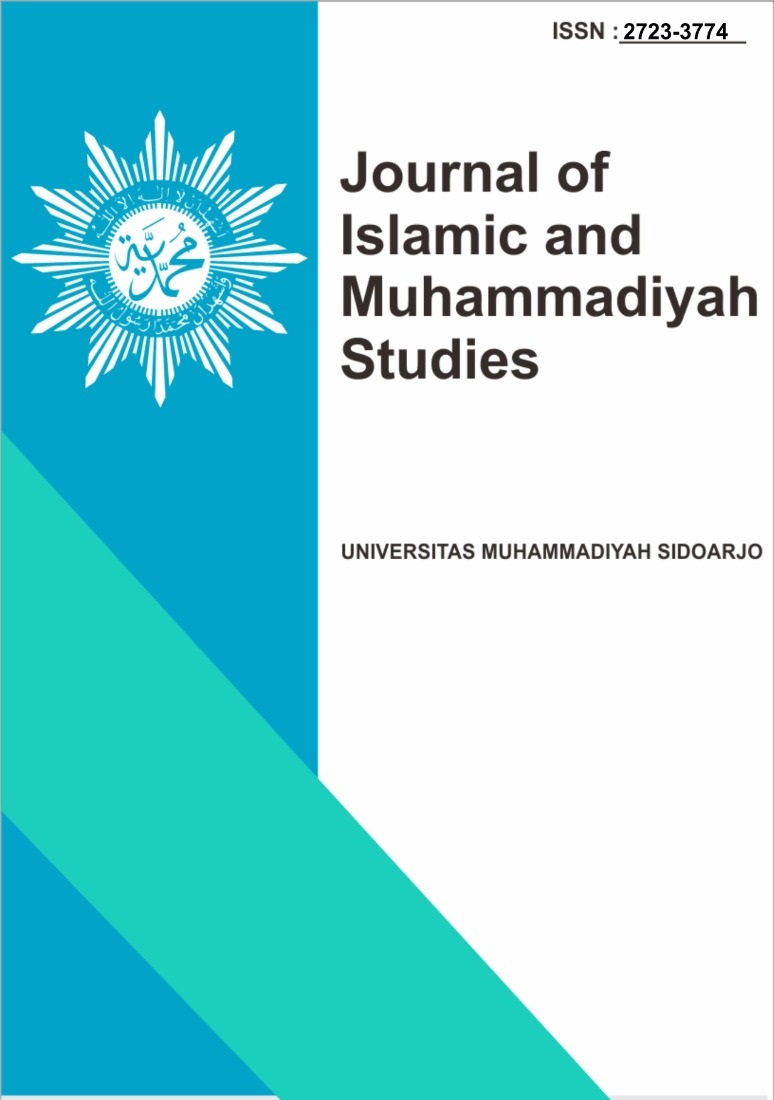The Pattern of Relation of Muhammadiyah and Parmusi
Pola Relasi Muhammadiyah dan Parmusi
DOI:
https://doi.org/10.21070/jims.v1i2.1065Keywords:
Muhammadiyah, Permusi pattern of relationAbstract
This study aims to reveal the pattern of relations between Muhammadiyah and the Indonesian Muslim Party (Parmusi). In this study, the author used the historical research method, following four steps. First, heuristics or collection of primary and secondary sources centered at the Muhammadiyah Central Library of Yogyakarta, the National Library of Jakarta, and the National Archives Office of the Republic of Indonesia (ANRI) Jakarta. Second, source criticism which includes external criticism to test the authenticity and internal criticism to determine the credibility of the source. Third, the interpretation or interpretation of historical facts resulting from the second step by conducting analysis and synthesis. Fourth, historiography or writing of historical work. The results showed that in the process of founding Parmusi in 1968, Muhammadiyah had played an important role as a midwife born in Parmusi. In the development of Parmusi until this party merged in the United Development Party (PPP) in 1973, Muhammadiyah's relations with Parmusi showed a more ideological rather than organizational relationship pattern.
References
Pemilu Lihat Siaran.(2008)
Muhammadiyah dan Politik: Catatan Kecil tentang Perjalanan Politik Warga Muhammadiyah. and, M. S. (2010).
Relasi M uhammadiyah, Islam dan Negara (Kontribusi Muhammadiyah dalam Perspektif Sejarah) (Jakarta: Pustaka Utama Grafiti).
Anonymous, P. and Indonesia, M. (1968). Partai Muslimin Indonesia, pronted archieve, Semarang: Pimpinan Partai Muslimin Indonesia Wilajah Djawa Tengah.
Budiyanto, G. (2010). Djarnawi Hadikusuma dan Muham- madiyah (Yogjakarta: LPPM)
Darban, A. A. Fragmenta Gerakan Muhammadiyah dari Masa ke Masa.
Jurdi, S.. Muhammadiyah dalam Dinamika Politik Indonesia.
Jurdi, S. (1966). Muhammadiyah dalam Dinamika Politik
Indonesia (Yogyakarta: Pustaka Pelajar), 183–185.
Mintaredja, S. and R (1970). Renungan dan Pembaharuan Pemikiran: Masyarakat Islam dan Politik di Indonesia (Djakarta: Permata), 110–113.
Muhammadiyah, S. (????). Nomor 8 Tahun Ke-50 1970. Muhammadiyah, S. (1971).
Nashir, H. (????). Khittah Politik Muhammadiyah. 30–31.
Peacock, J. L. (1986). Gerakan Muhamadiyah Memurnikan Ajaran Islam di Indonesia (Jakarta: Penerbit Cipta Kreatif), 103–104.
Pp, T. D. D. L. (2010). Abad Muhammadiyah Gagasan Pem- baruan dan Sosial keagamaan (Jakarta: Penerbit Kompas), 224–224.
Resmi, M. B. (1972). Muhammadijah Berita Resmi. Syaifullah, G. and Masyumi, P. M. D. (1997). Jakarta: Pustaka
Utama Grafiti, 141–142.
Tamara, N. (1988). Sejarah Politik Islam Orde Baru. 13–13.
Yusuf, H. (1989). Perjuangan dan Pengabdian Muham- madiyah. vol. 17 (Jakarta: Elsevier BV), 300–300. doi: 10.1016/0300-5712(89)90045-6.
Published
How to Cite
Issue
Section
License
Authors retain copyright and grant the journal right of first publication with the work simultaneously licensed under a Creative Commons Attribution 4.0 International License that allows others to share the work with an acknowledgement of the work's authorship and initial publication in this journal.






